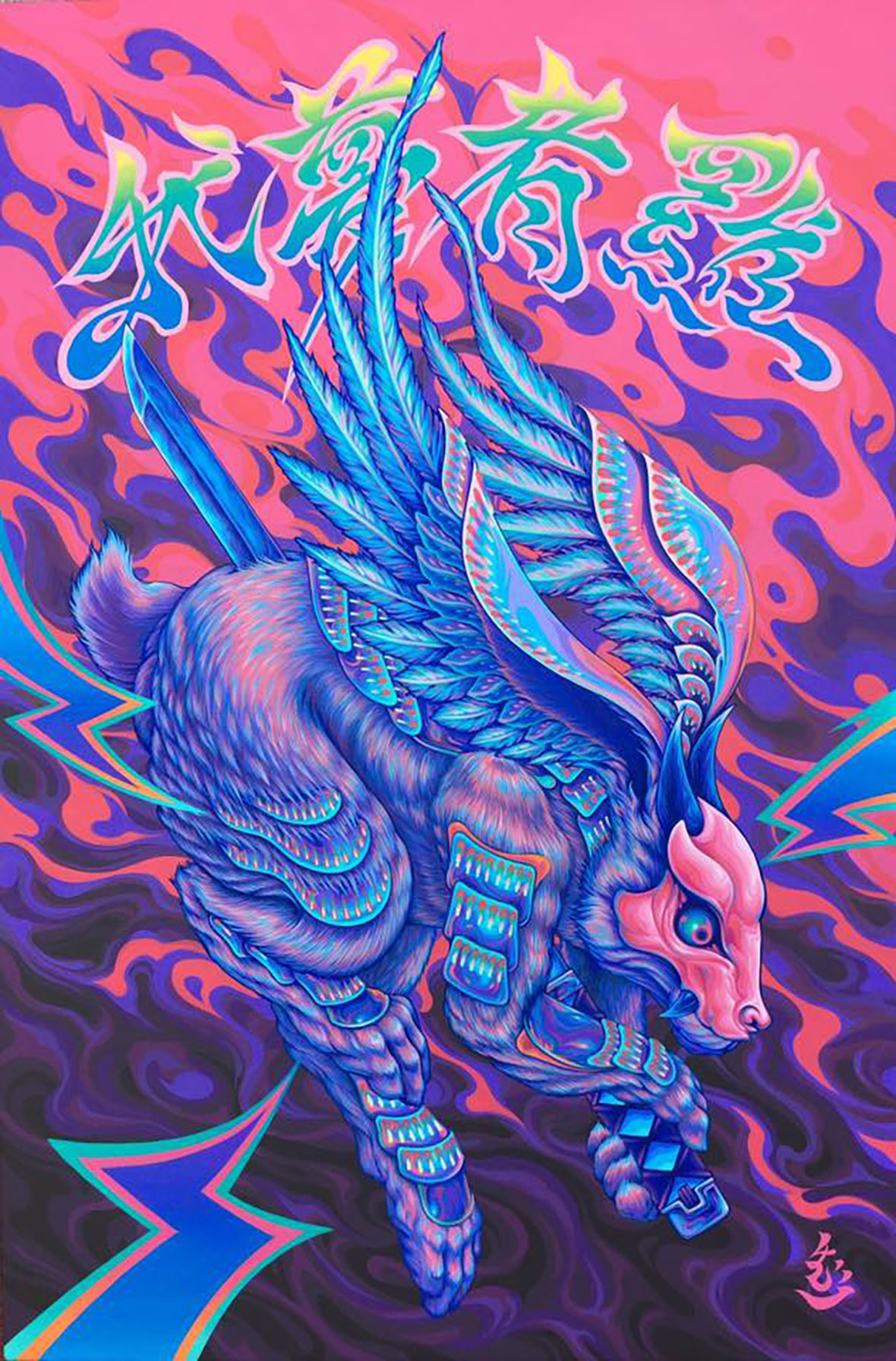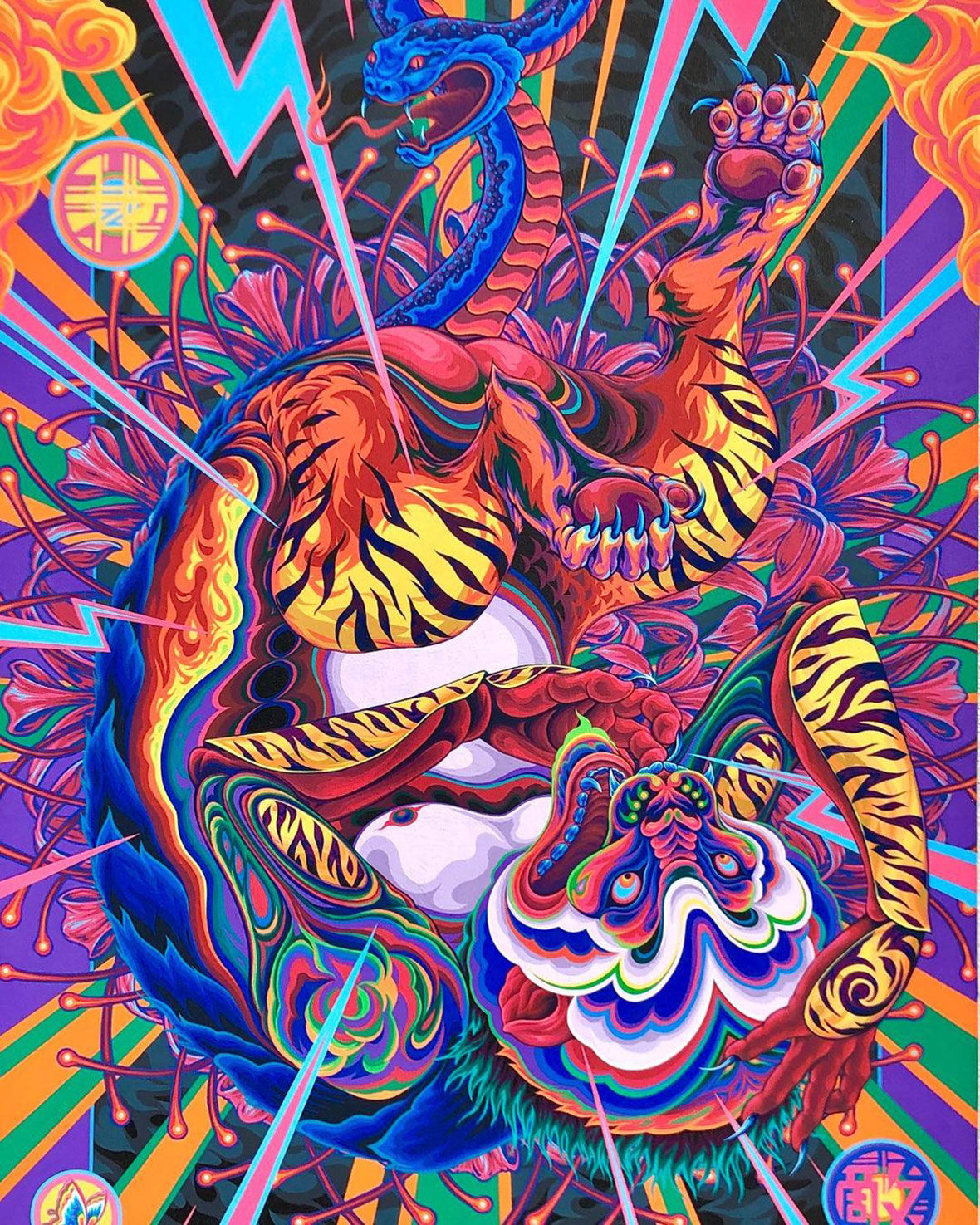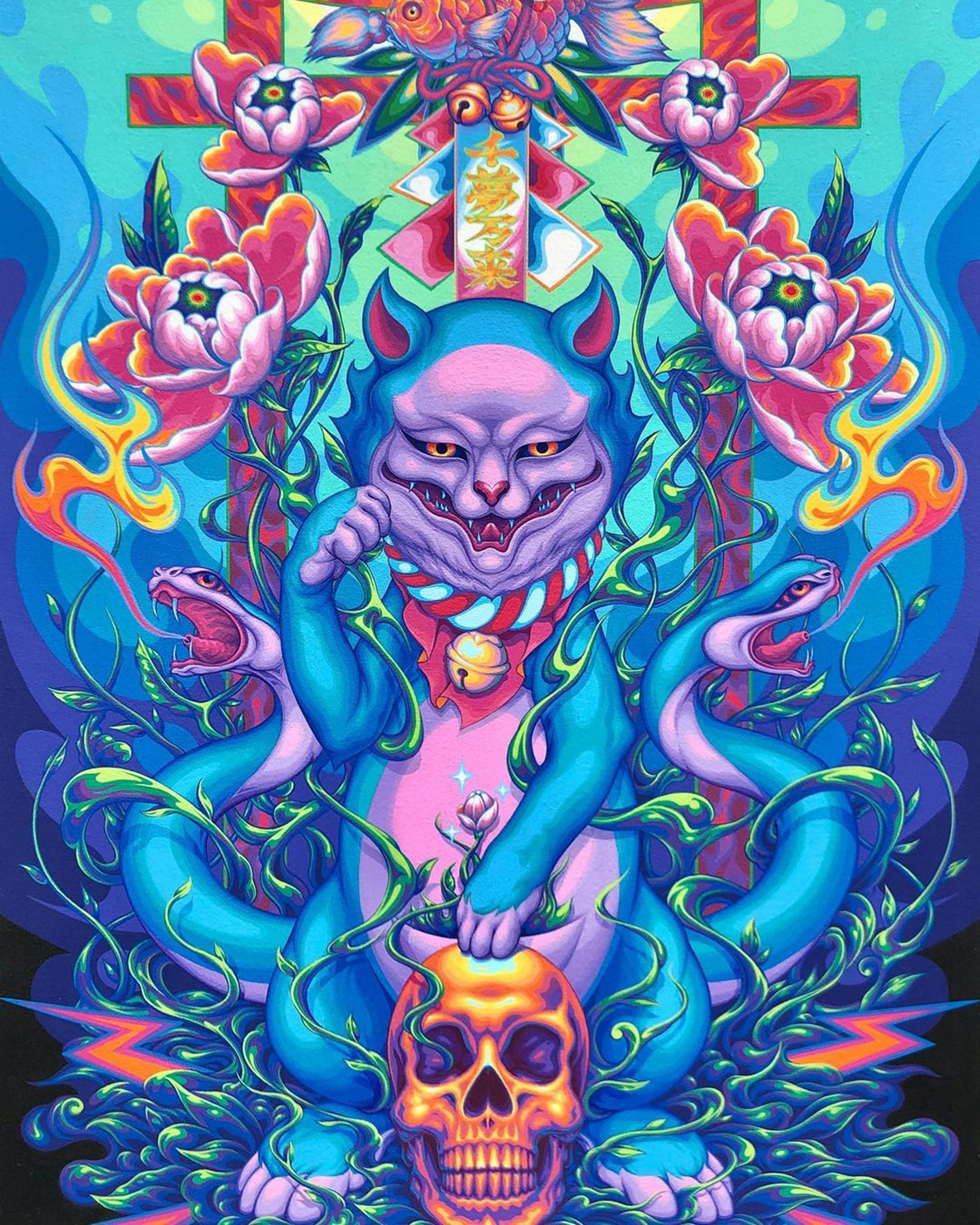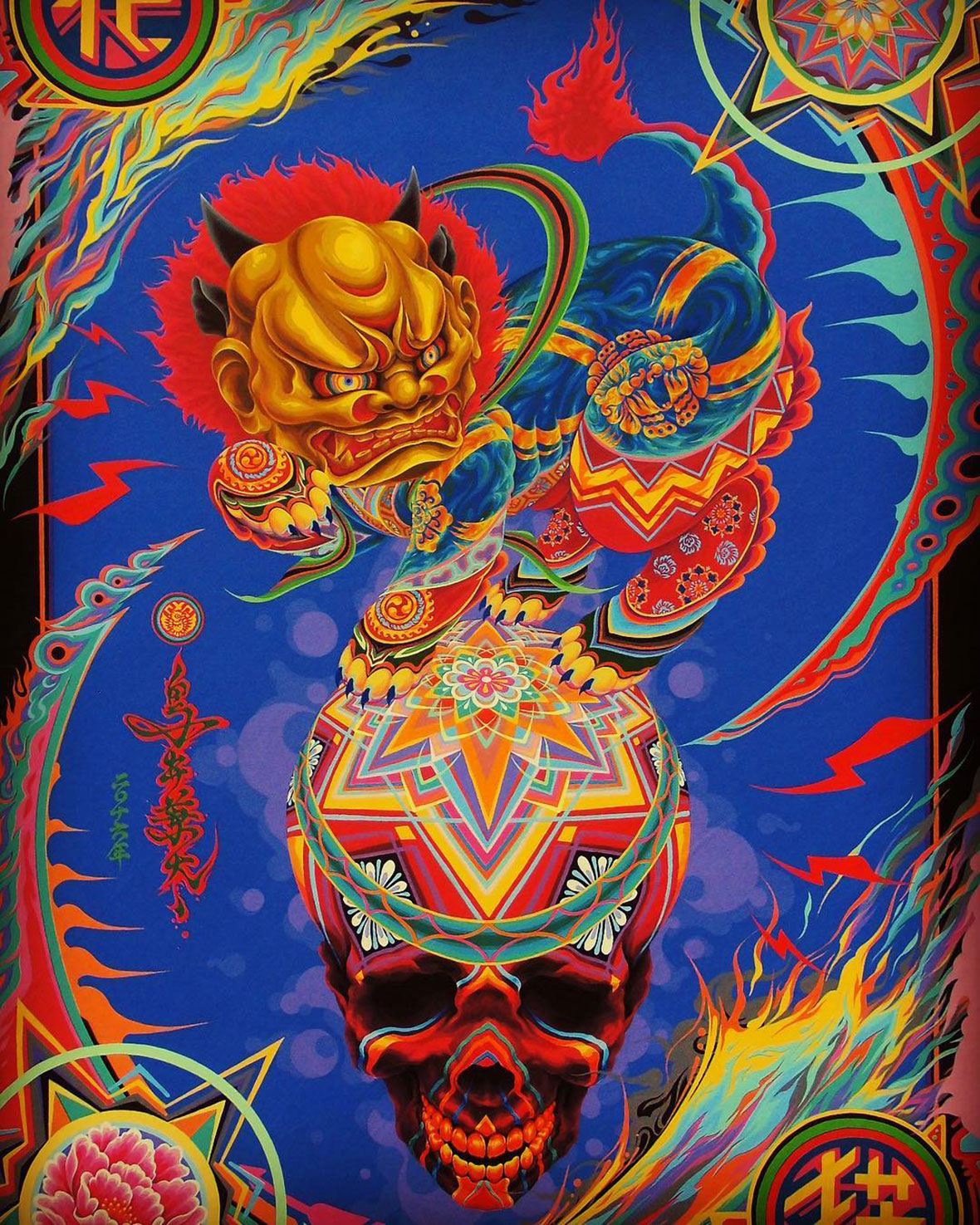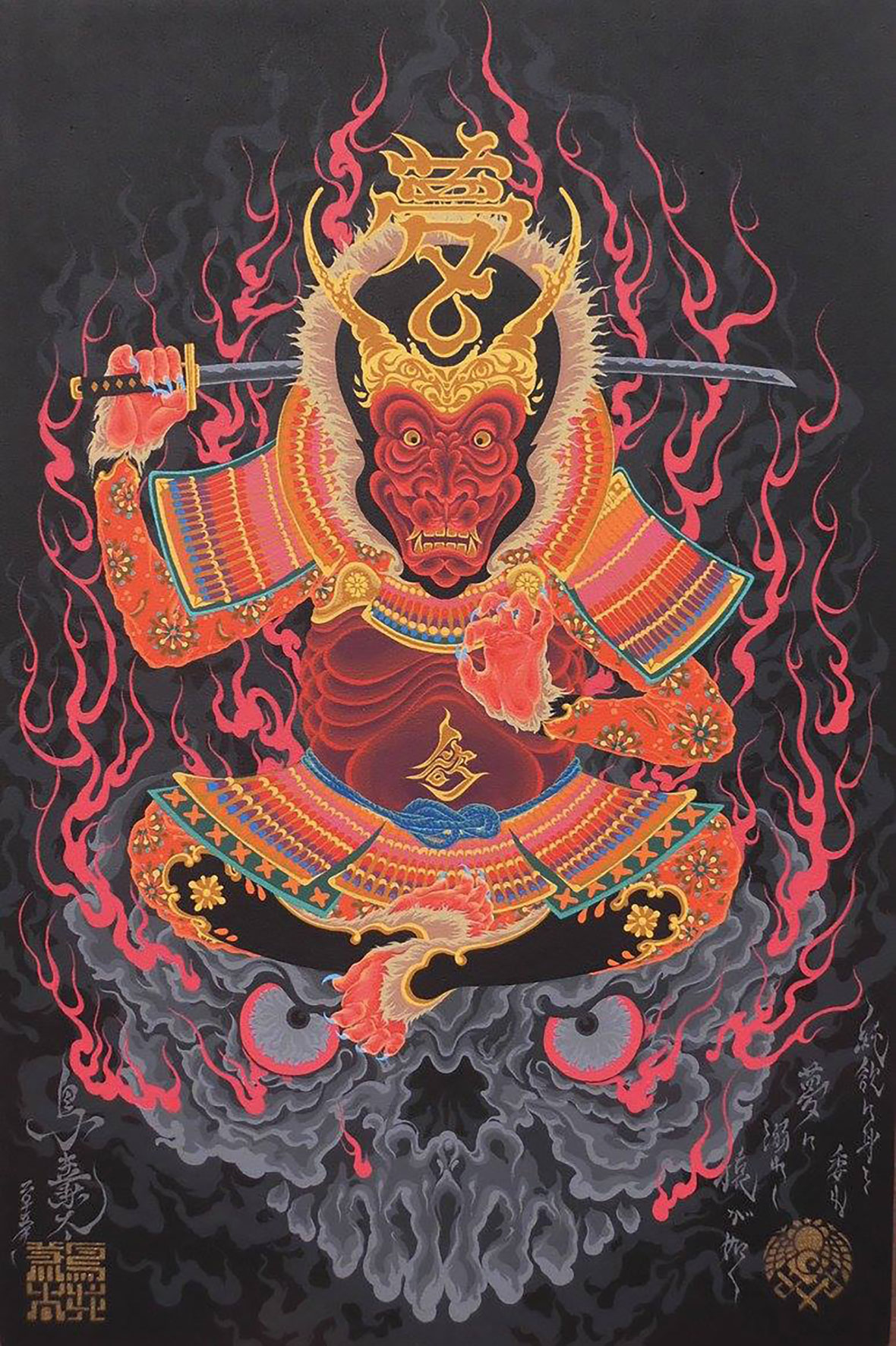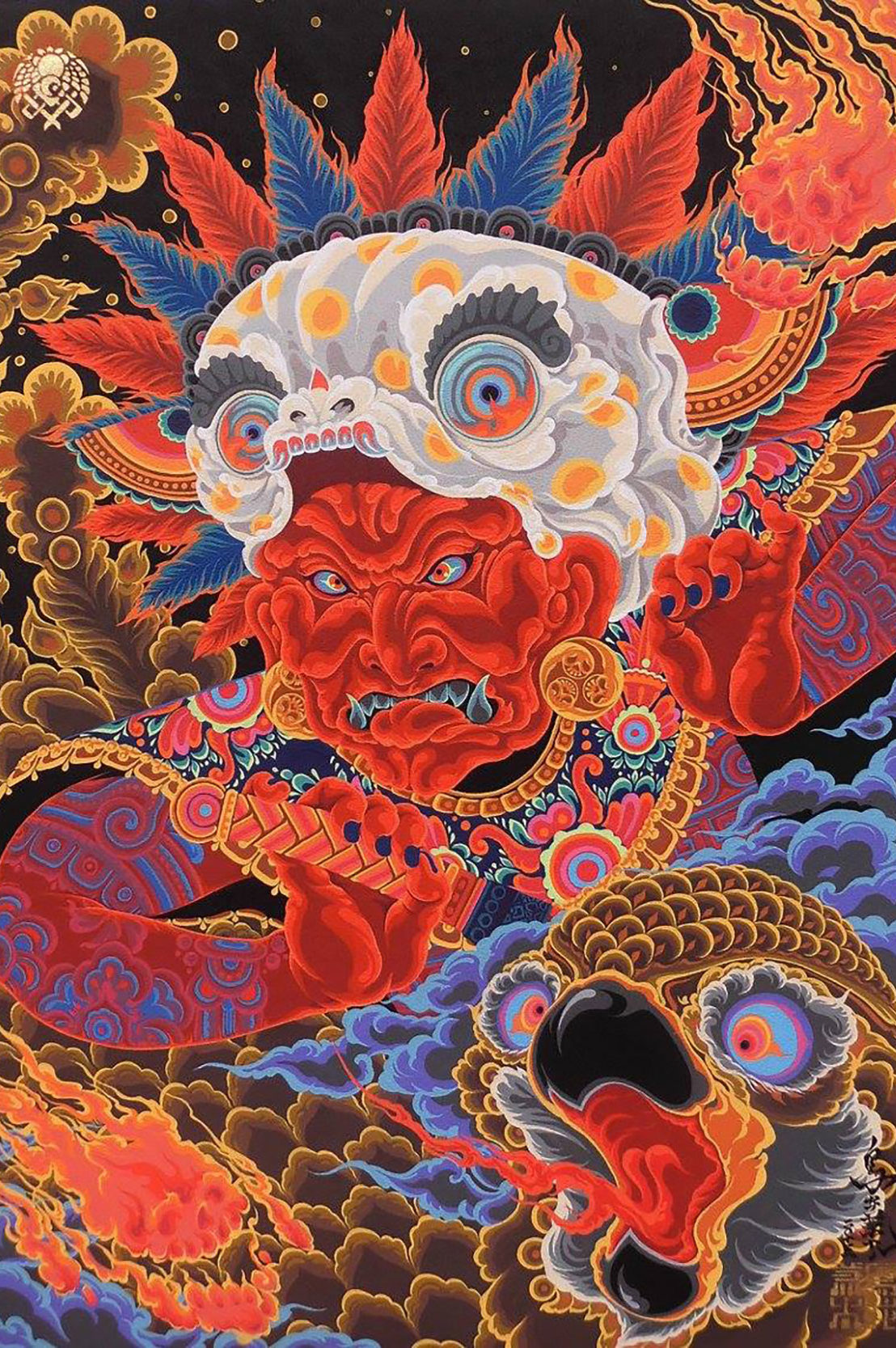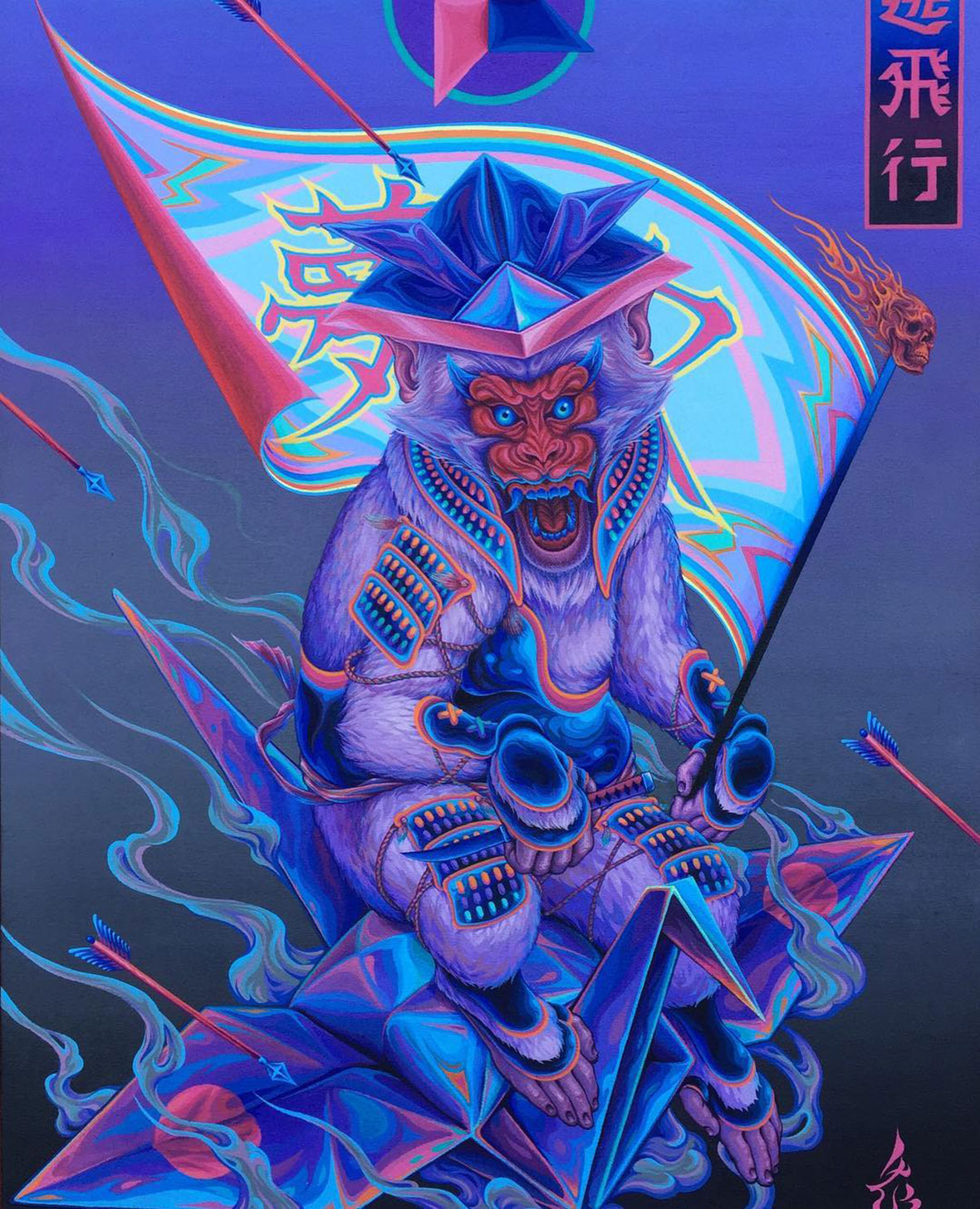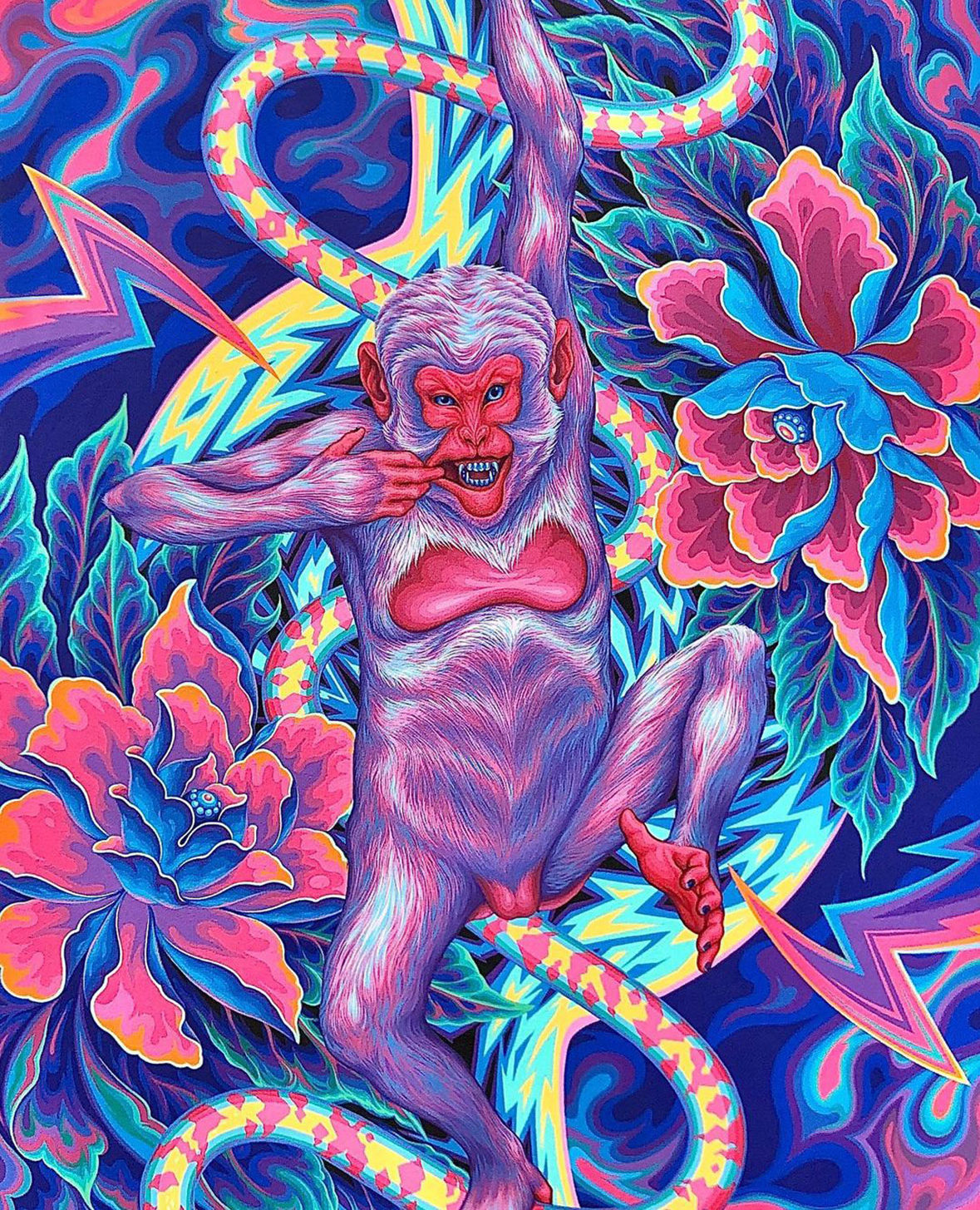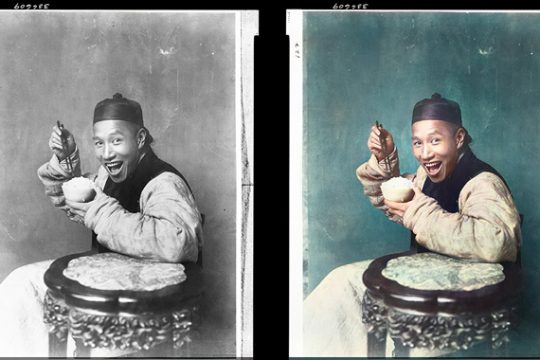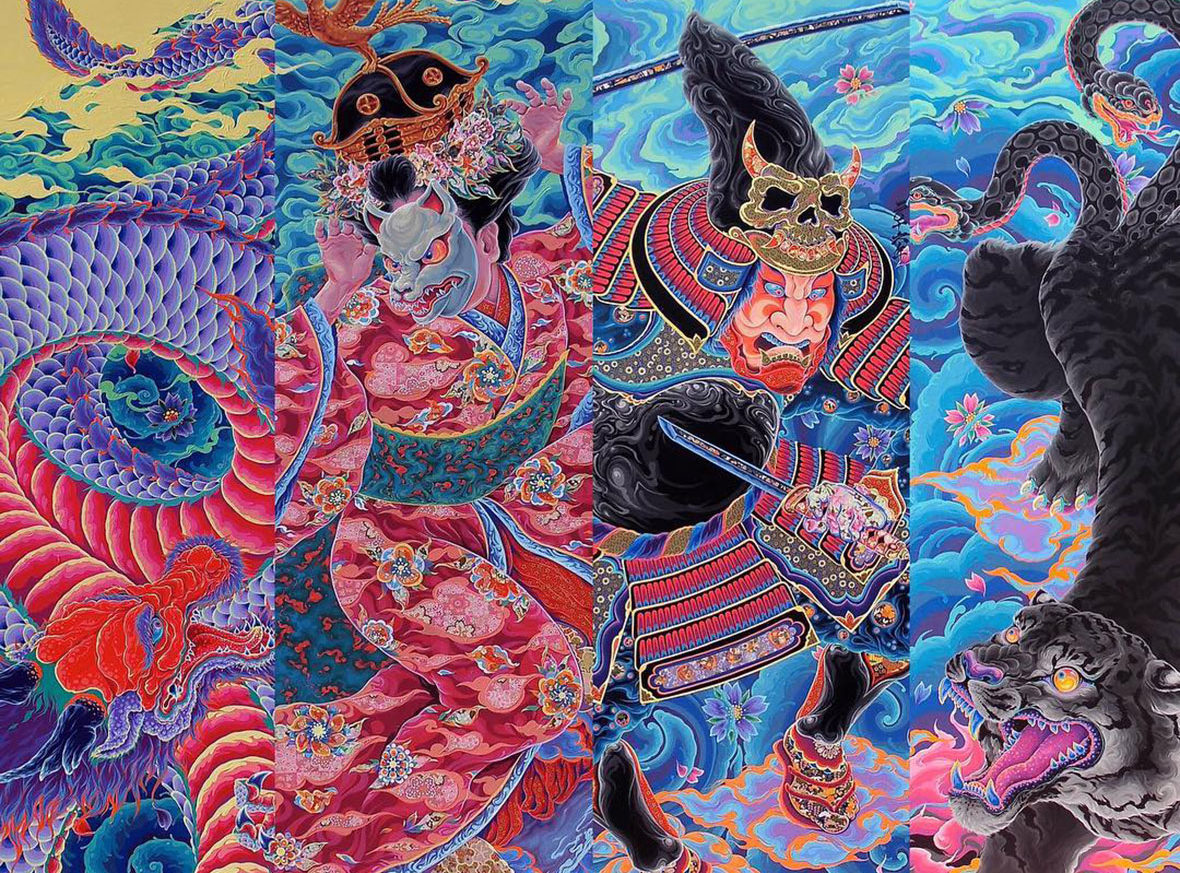
There aren’t a lot of commonalities between Japanese and Mexican culture. In fact, most people would even consider them to be polar opposites, especially when it comes to each country’s art traditions. Just take for example, the preferences towards color. Traditional Mexican art, such as alebrijes sculptures and huichol beads, are defined by bombastic colors. Meanwhile, traditional Japanese art, such as ukiyo-e painting or woodblock prints, colors are much more understated. Despite these glaring differences, the two cultures somehow mesh like old friends in the works of Japanese artist Kenta Torii.
在文化方面,日本和墨西哥两个国家并没有太多的共同点,甚至在大多数人眼中,两者可以说是两个极端,尤其是这两个国家的艺术传统,例如对色彩的偏好。传统墨西哥艺术以浮夸抢眼的色彩为主,如阿莱布里赫(Alebrijes)雕塑和辉哲人(Huichol)串珠;而在日本传统艺术,如浮世绘或木版画,色彩则低调得多。虽然两地的艺术文化有着明显的差异,但在日本艺术家鸟井荒木(Kenta Torii)的作品中,这两种截然不同的文化却出乎意料地融为一体。
In 1999, Torii was interested in art, but it wasn’t his primary passion—instead, he had aspirations of becoming a professional soccer player, and these ambitions took him to Brazil. There, he fell in love with Latin-American art and culture. In 2001, he moved back home to Japan, where he dedicated himself to studying art. However, for such a free spirit, the rigid structure of an academic curriculum just wouldn’t do. He decided to leave Japan in 2005, and experienced the art scene in New York before deciding to head further south, to Mexico, and see how the Latin-American culture that he fell in love with almost half a decade back differed there.
He lived and painted for a full year in Mexico before moving back to Japan again. However, in the place he thought to be home, he felt strangely out of place and creatively stifled. It didn’t take long before he made the decision to move to Mexico for good, and today, Torii has proudly called South America home for over a decade.
1999 年的鸟井虽然也对艺术颇有兴趣,但那时的他更希望成为一名职业足球运动员。怀揣雄心壮志,他来到巴西。在那里,他爱上了拉丁艺术和文化。2001 年回到日本后,他致力于学习艺术。然而,对于生性自由的他,僵化的学术课程并不适合自己。2005 年,他决定离开日本,前往纽约沉浸于当地艺术圈,之后又一路向南,来到墨西哥,想看看他在五年前所热爱的拉美文化在当地会有怎样的不同之处。在墨西哥生活和创作了整整一年后,他再次返回日本。然而在自己的故土,他却感到格格不入,创意灵感戛然而止。没过多久,他就毅然决定移居墨西哥。现在,鸟井已经在南美洲生活了十多年。
Torii’s passion for Mexico and Latin-American culture now shines through in his artworks. The vivid colors he employs evoke the bombastic palettes of Mexican folk art, while busy patterns evoke the shapes of papel picado fill the negative spaces of his canvases, and other Mexican cultural nods, such as Aztec headdresses and Day of the Dead sugar skulls, abound his compositions. Not all of these elements may be consciously included but its undeniable that his exposure to Latin-American art has influenced his artistic mindset. “There are many interesting aspects of Mexico, and I want to create art that celebrates them through my own methods—as someone born in Japan and living in Mexico,” he says.
鸟井的作品中洋溢着他对墨西哥和拉美文化的热情。鲜艳的色彩呼应了墨西哥民间艺术的浮夸,纷繁复杂的图案令人想起墨西哥剪纸,除此之外,他的作品中还充满着其他墨西哥文化无素,譬如阿兹特克(Aztec)头饰和亡灵节糖骷髅等等。这些元素并非都是他刻意加持,毋庸置疑,拉美艺术对他的艺术思维有着深刻的影响。他说:“墨西哥有许多有趣的文化,我想以一个在日本出生、在墨西哥生活的人的角度,通过自己的艺术作品来展示这些文化。”
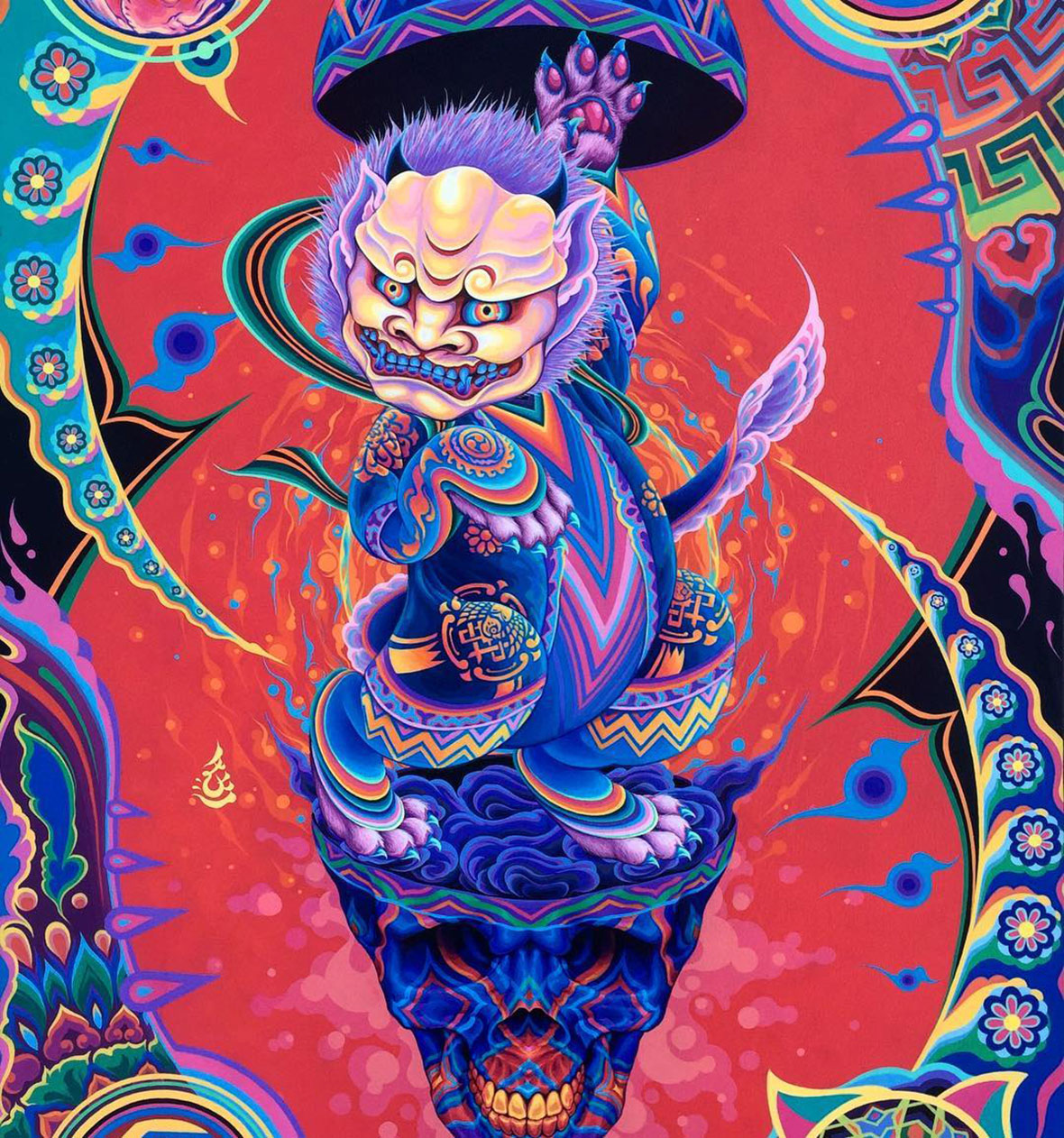
Kenta’s Japanese heritage is also front and center in his art. Motifs such as lion-dogs and samurai armor exist alongside his homages to Latin-America. Take for example, in one piece, a Japanese monkey wears a tengu mask fused with an Aztecan headdress. Though these traditional themes are all presented through a contemporary style defined by pops of neon colors and street art influences, their cultural origins are unmistakable. “I probably don’t know as much about the Japanese art world as I should,” he laughs. “But I respect Japanese artists, and whenever I feel lost, I’ll return to my Japanese roots to discover new direction.”
日本文化根源在鸟井作品中同样占据重要地位。狮子狗和武士等日本特色图案与致敬拉美文化的元素相依而存,譬如在一幅作品中,一只日本猕猴戴着阿兹特克头饰元素的天狗面具。各种传统主题杂糅霓虹灯色彩与街头艺术重新演绎,既当代,又透露着明确无误的文化渊源。他笑着说:“虽然我对日本艺术界的了解不多,但我对日本艺术家十分敬佩。每当我感到迷茫,我就会把目光望回日本,从中寻找新的方向。”
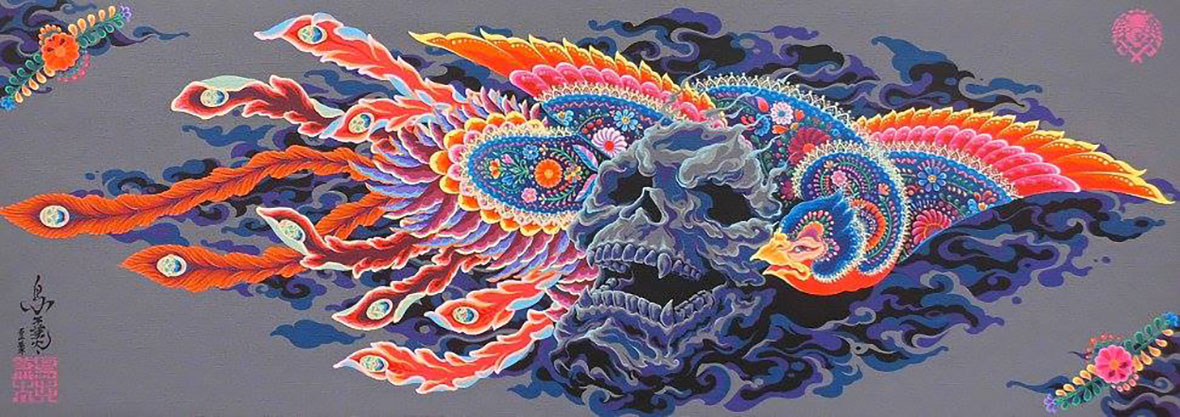
As he sees it though, there are differences between the two country’s art traditions that extend beyond aesthetics alone. Mexican art feel more visceral while Japanese art tend to feel more guided by logic. These differences between Japanese art and Latin-American art make for interesting juxtapositions. Kenta’s unique interpretation of both cultures is proof that when seemingly clashing ideals are given a chance to intersect, magic happens.
然而,在他看来,两国艺术传统之间的差异不只是在美学方面。墨西哥艺术感觉更情真意切,而日本艺术则更遵循理性逻辑。日本艺术与拉美艺术之间的差异组成了有趣的并置。从鸟井对这两种文化的独特演绎中可以看出,看似相互冲突的想法也可以碰撞出奇妙的火花。
Like our stories? Follow us on Facebook and Instagram.
Instagram: @kentatorii
Contributor: David Yen
Chinese Translation: Olivia Li


